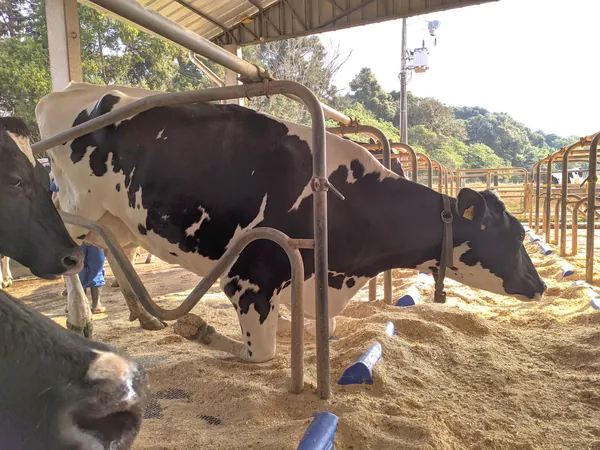
Revolutionary 3D Computer Vision System Transforms Monitoring of Dairy Cow Behavior and Welfare
2024-11-20
Author: Yu
Introduction
Dairy cows, typically resting for over ten hours a day, require a dry, clean, and comfortable environment to maintain their health and productivity. A key component of this comfort is the ease with which cows can rise and lie down in their stalls, necessitating vigilant observation from farm staff to detect any irregularities in their movement.
The Study
A groundbreaking study published in the Journal of Dairy Science by a Swedish research team in collaboration with Sony Nordic introduces an automated 3D computer vision model that meticulously tracks dairy cow movements. This novel system not only brings invaluable insights into cow welfare but also offers a far more efficient method of assessment for both researchers and farmers.
Led by esteemed veterinarians Niclas Högberg and Adrien Kroese from the Swedish University of Agricultural Sciences, the study aims to provide a reliable means of monitoring how easily cows can transition between lying down and standing—an essential measure of their overall comfort.
Adrien Kroese highlights the importance of this research, stating, "Studies have shown a clear link between restricted movement in cows and diminished welfare; hence, observing their movement is crucial." Traditional observation methods often rely on humans and can be inconsistent and time-consuming, prompting the necessity for a more objective approach.
Methodology
To achieve this, the research team deployed a sophisticated setup involving seven cameras to capture the activities of a herd consisting of Swedish Holstein and Swedish Red cows over a continuous 24-hour period. The recorded footage was processed using advanced 3D pose estimation software, which identifies and logs movements through a combination of 2D object detection and pose estimation techniques.
Data Analysis
The data generated from this process was then analyzed using convolutional neural networks, allowing the researchers to create comprehensive 3D maps of the cows' movements. This technology effectively identifies transitions from lying down to standing, providing critical insights into cow behavior.
Results
Kroese elaborated on the effectiveness of the system: "We compared automated standing data from our software against timestamps annotated by three human observers—the benchmark for behavioral studies. Impressively, the system detected transitions with over 88% accuracy."
Moreover, the results indicated that this automated approach introduces no additional bias compared with human assessment. Although the study acknowledges certain limitations, its findings underscore the promising future of 3D pose estimation as a reliable tool for observing dairy cow behavior.
Conclusion
"This technology signifies a remarkable advancement in the monitoring of animal well-being," Kroese asserted. "By seamlessly detecting posture transitions, we can better understand the comfort levels and welfare of dairy cows."
This innovative model paves the way for researchers to expand their analysis of cow behaviors and movement patterns, ultimately empowering farmers to make well-informed decisions regarding the care of their herds. The continued development of such assessment tools holds tremendous potential to revolutionize the dairy industry, enhancing animal welfare and production efficiency.
Stay tuned for more updates on this fascinating advancement in agricultural technology!


 Brasil (PT)
Brasil (PT)
 Canada (EN)
Canada (EN)
 Chile (ES)
Chile (ES)
 España (ES)
España (ES)
 France (FR)
France (FR)
 Hong Kong (EN)
Hong Kong (EN)
 Italia (IT)
Italia (IT)
 日本 (JA)
日本 (JA)
 Magyarország (HU)
Magyarország (HU)
 Norge (NO)
Norge (NO)
 Polska (PL)
Polska (PL)
 Schweiz (DE)
Schweiz (DE)
 Singapore (EN)
Singapore (EN)
 Sverige (SV)
Sverige (SV)
 Suomi (FI)
Suomi (FI)
 Türkiye (TR)
Türkiye (TR)